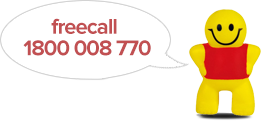
8 May, 2024
From Classroom to Boardroom: The Versatility of Stress Shapes
Today we'll have a chat about something that's as handy in the classroom as it is in the boardroom – stress shapes! You know, those squishy little wonders that fit right in your palm, often shaped like animals, objects, or abstract forms. They're not just for a bit of fun; these nifty gadgets are a brilliant way to manage stress, help with focus, and even promote creativity. We'll look at how they bridge the gap between learning environments and professional settings.
A Bit of Background on Stress Shapes
First off, what exactly are stress shapes? They're usually made of foam or a similar squishy material, and are designed to be squeezed and manipulated. Originating as a tool for stress relief, they’ve become popular in various settings. You might have seen them in classrooms, offices, or even at promotional events. They come in all sorts of shapes and sizes – from classic spheres to custom designs that resemble company logos or mascots.
Stress Shapes in the Classroom

In the classroom, they are more than just a toy. They're a valuable tool for students of all ages.
1. Focus and Concentration: A Handy Helper for Restless Minds
Now, for some students, particularly those who might be wrangling with ADHD or anxiety, sitting still and concentrating can be a real challenge. This is where stress shapes come in as a game-changer.
- Physical Outlet for Energy: They offer a physical way to channel restless energy. It's a bit like tapping your foot or doodling in the margins of your notebook. By keeping their hands busy, students can often find it easier to focus their minds on the task at hand.
- Subtle and Non-Disruptive: What's great about them is that they're pretty discreet. A student can give one a squeeze under the desk, and it's not likely to cause a distraction like some other fidget toys might.
- A Range of Options: There's a wide variety of shapes and textures available, meaning there's something to suit different preferences and needs. Some kids might prefer something super squishy, while others might go for a firmer texture.
2. Stress Relief - A Squeeze to Ease the Pressure
School can be stressful, no doubt about it. Whether it's exams, assignments, or just the everyday hustle and bustle, squeezing one can provide a moment of calm.
- Sensory Learning: They can also be a great sensory tool for younger kids, helping them to develop fine motor skills and sensory perception.
- School can throw a lot at kids – exams, assignments, social dynamics, you name it. Stress shapes can be a small but mighty ally in managing these pressures.
- Instant Stress Buster: When things get a bit overwhelming, squeezing one can be an immediate way to release tension. It's a simple, quick method for students to regain a sense of calm.
- Mindfulness and Breathing: Teachers can even incorporate them into mindfulness exercises. For example, students can focus on the sensation of squeezing the shape while practising deep breathing. It's a great way to introduce them to mindfulness techniques.
3. Sensory Learning: More Than Meets the Hand
For the younger kiddos, they are more than just a stress-relief tool; they're a pathway to developing essential skills.
- Fine Motor Skill Development: Regular use of them can help in enhancing fine motor skills. This involves the use of small muscles in the hands and fingers, crucial for tasks like writing, tying shoelaces, or buttoning a shirt.
- Sensory Exploration: They provide a tactile experience, which is vital for sensory learning. Kids get to explore different textures, densities, and sizes, which is a fun and engaging way to stimulate their sensory perception.
- Educational Integration: Educators can cleverly integrate them into learning activities. For example, using ones that represent different animals or objects for a tactile learning experience in science or geography lessons.
Stress shapes in the classroom are doing a whole lot more than just sitting pretty on desks. They're helping students with concentration, offering a quick stress relief solution, and even aiding in the development of fine motor skills and sensory perception. They're a small tool making a big impact!
The Boardroom Benefit

Now, let's talk about the corporate world. It might seem a bit odd to find them in a professional setting, but they've got their place. Here’s how:
1. Stress Management: A Quiet Companion in Tense Times
The boardroom can sometimes feel like a pressure cooker, and that's where these little squishy mates come into play.
- Discreet Stress Relief: In a meeting or while crunching numbers to meet a deadline, having one to squeeze can be a real lifesaver. They're quiet and unobtrusive, meaning you can manage your stress without drawing attention to yourself.
- Physical Release for Mental Stress: It's fascinating how giving something a good squeeze can help release mental tension. It's a bit like letting out a deep breath after holding it in for too long – a physical act that helps to alleviate mental pressure.
- Always at Hand: They can sit inconspicuously on a desk or in a drawer, always ready for those moments when you need a quick break from the mental treadmill.
2. Creativity and Problem Solving: Squeezing Out New Ideas
There's something quite intriguing about the link between handling a physical object and mental agility.
- Tactile Stimulation for Creativity: Twisting, squishing, and manipulating one can help get those creative juices flowing. It's a bit like how some people pace around when thinking – the physical movement aids in the cognitive process.
- Break from the Screen: In an age where we're often glued to our screens, having one to fiddle with can provide a welcome break. This small diversion can sometimes be just what's needed to look at a problem from a different angle.
- Encouraging Playfulness: Incorporating elements of play into work can foster a more creative environment. They can be a subtle nod to this, reminding everyone that it's okay to think and act outside the conventional box.
3. Promotional Tools: A Clever Marketing Tactic
Companies are getting quite savvy with how they use them for branding and marketing.
- Brand Reminder in Your Hand: Creating custom stress shapes with a company logo or message turns them into miniature billboards. They're a physical reminder of the brand, kept right on someone's desk or in their hand.
- Cost-Effective Marketing: Compared to other promotional items, they are relatively inexpensive to produce. This makes them a cost-effective option for giveaways at conferences, trade shows, or corporate events.
- Versatile and Memorable: Unlike a pamphlet or business card that might be easily discarded, it is likely to be kept around, serving as a longer-lasting reminder of the company.
So, there's the lowdown on how stress shapes are making a splash in the corporate world. Far from being just a novelty item, they're a practical tool for managing stress, sparking creativity, and even doubling up as a clever marketing strategy. They're proof that sometimes, the simplest solutions can be the most effective in the hustle and bustle of corporate life.
Tips for Choosing and Using Stress Shapes
When considering them for a classroom or office environment, it's essential to take into account several factors to ensure they are effective, safe, and durable.
1. Pick the Right Shape
- Comfort and Ergonomics: The shape should fit comfortably in the hand, allowing for an easy and effective grip. Ergonomic designs can be more beneficial as they are tailored to fit the natural contours of the hand.
- Size Considerations: It’s crucial to choose a size that is neither too small nor too large. A size too small might not provide enough surface area to squeeze effectively, while a too large shape might be difficult to handle, especially for children or individuals with smaller hands.
- Firmness: The firmness plays a key role in its effectiveness. If it's too soft, it won’t provide enough resistance to be satisfying; if it’s too hard, it might be uncomfortable or difficult to squeeze, potentially causing strain.
2. Quality Matters
- Material Durability: High-quality materials ensure they withstand repeated use without tearing or breaking apart. Typically, foam or gel-filled materials are used for their durability and tactile feel.
- Longevity: Better quality materials usually mean it will retain its form and elasticity over time, providing a consistent stress-relieving experience.
3. Safety First
- Child-Friendly: In a classroom setting, it's important that they are safe for children. This means avoiding small parts that could be choking hazards and ensuring the material is robust enough to not break into smaller pieces. Please bear in mind they are not toys and should not be treated as such.
- Non-Toxic Materials: The materials used should be non-toxic, as children might put these shapes in their mouths. It’s also essential for allergy considerations, ensuring materials that are hypoallergenic.
4. Keep It Clean
- Ease of Cleaning: Since they can accumulate dirt and germs, especially in a classroom or public office setting, choosing ones that are easy to clean is important. Some can be wiped clean with a damp cloth or have washable covers.
- Material Considerations for Cleaning: Materials that don't absorb sweat or dirt easily are preferable. Waterproof or water-resistant materials can be more hygienic as they can be cleaned more thoroughly.
Summary
So, there you have it! They might seem simple, but they’re a versatile tool that fits seamlessly into both educational and professional settings. Whether it’s helping a student focus on their studies, giving a professional a moment of calm during a hectic day, or promoting a business, they have got it all. Next time you see one, give it a squeeze and feel the stress melt away! Cheers!
The Stress Balls Only Team




